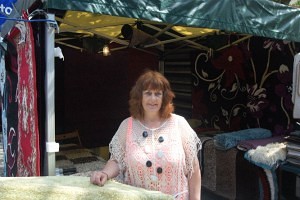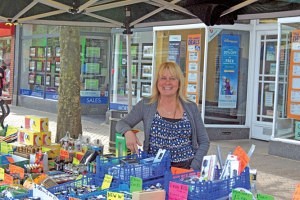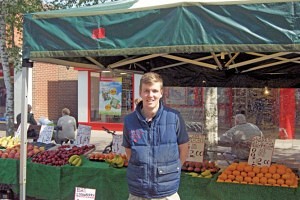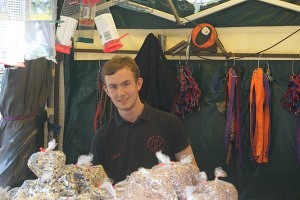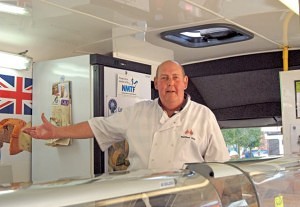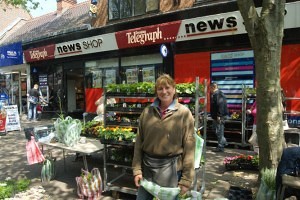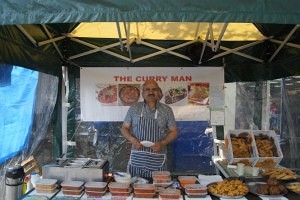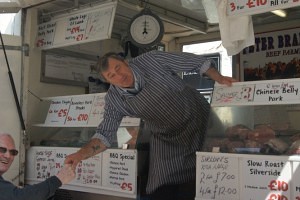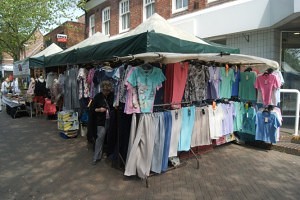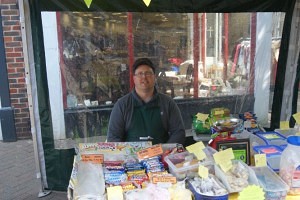Market helps renaissance town
Swadlincote in South Derbyshire may well have been known for its coal pits and potteries in days gone by, but it is now increasingly becoming renowned as a market town. South east of Burton-upon- Trent and North West of Ashby-dela- Zouch, the town has gone through somewhat of a renaissance in recent times.
The market plays a major part in this new lease of life and is helping drive the area to an even more prosperous future. Collieries and potteries were the mainstay of Swadlincote’s industry since Victorian times, with its heritage very much rooted in the industrial revolution. However, as was the case throughout the country, these industries dwindled and all but disappeared. The final colliery in Swadlincote closed in 1988. However, the closure of the pits and potteries did not spell the end for the town.
The area has been greatly rejuvenated since this lull, with South Derbyshire District Council putting great effort into making it a place to not only visit, but do business in. Swadlincote (or ‘Swad’ as it is affectionately known to locals) is in the heart of The National Forest, a massive project with the ambition of linking up 200 square miles of landscape with trees over former colliery land. Since its introduction, it has drawn tourists to the former industrial towns within its borders and has subsequently boosted the local economy. It is not just in the wider area that regeneration is taking place, Swadlincote itself is in the process of reinventing itself.
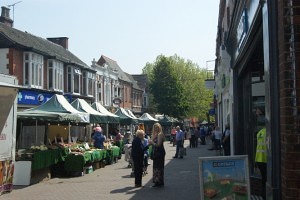 Since 2001, with its innovative town centre masterplan, the framework has been set for the creation of a dynamic town centre. Since the loss of the mining and potteries industry, large investments have been made into leisure and retail units in the town, all of which can only benefit its economy. This has been backed up with new business and housing developments set up on brownfield sites. Swadlincote’s uniqueness has been celebrated, with a grant scheme helping preserve shop fronts thanks to the Council receiving English Heritage’s regional conservation award in 2009. Making the town even more inviting is an initiative to plant street trees and other landscaping projects, creating a pleasant, ‘green’ environment. Despite having developed into a bright, modern town, Swadlincote still celebrates its heritage. It has the Sharpe’s Pottery Museum, complete with an impressive pottery kiln. Again, this has increased the amount of tourists visiting the town. For instance, the museum alone attracted 70,000 last year and other attractions, such as the ski centre, bring even more into the town.
Since 2001, with its innovative town centre masterplan, the framework has been set for the creation of a dynamic town centre. Since the loss of the mining and potteries industry, large investments have been made into leisure and retail units in the town, all of which can only benefit its economy. This has been backed up with new business and housing developments set up on brownfield sites. Swadlincote’s uniqueness has been celebrated, with a grant scheme helping preserve shop fronts thanks to the Council receiving English Heritage’s regional conservation award in 2009. Making the town even more inviting is an initiative to plant street trees and other landscaping projects, creating a pleasant, ‘green’ environment. Despite having developed into a bright, modern town, Swadlincote still celebrates its heritage. It has the Sharpe’s Pottery Museum, complete with an impressive pottery kiln. Again, this has increased the amount of tourists visiting the town. For instance, the museum alone attracted 70,000 last year and other attractions, such as the ski centre, bring even more into the town.
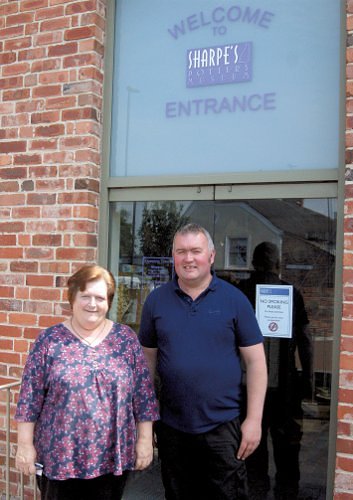
A short walk from the museum is Swadlincote’s open air street market. It is open on Tuesdays, Fridays and Saturdays and runs all year round with extra days put on through the busy Christmas period. Stalls are provided by Groupe Geraud, the company behind the market. According to Simon Wardle, the market Manager, Groupe Geraud has owned the market since 1999. Simon has been in the market trade business for approximately 23 years, with the latter 12 years serving as the Swadlincote Market Manager. He still trades there himself, with his own pet food stall. Friday proves to be the busiest day on the market for Simon and his fellow traders. However, the other two days are anything but quiet.
A farmer’s market is also held on Sundays. Amongst the market’s accolades includes being chosen as Derbyshire’s representative in the Radio 4 Food Awards and winning a local business award for raising the profile of the area. The market was previously run by South Derbyshire County Council and has in the past been an indoor market in a building nearby its current location. This former site is now a car park. Simon is glad it has moved outside, particularly on a sunny day like the one I visited on.
“When it was cold outside, in there it felt like it was -20!”
There is a ‘real good mixture of traders’, with clothing, sweets, plants, cooked food and fruit and vegetables amongst other goods. Despite this, Simon assures there is plenty of room for more traders to come onboard. All wares are welcome, but he says there is a particular niche for a fish seller, shoes and handbags.
A recent retiree from the market has opened up an opportunity to sell the latter. Simon said, ‘Craft-type stalls always seem to do well too and we always encourage them.’ To encourage more on the market, Simon can organise start-up initiatives. These are available to anyone that has never traded before, providing them with discounts.
“We do all we can to look after the traders here.’ The Council administrates the market’s Facebook page, something Simon said has helped it a ‘great deal”.
Also helping the prosperity of the market is the involvement of the local council and tourist board. Their efforts are aimed at using the market to engage the local community. For instance, there are a number of events they organise together, which in the past have included football team mascot races, pancake races and treasure hunts for children. These events all see the cooperation of market traders and local businesses.
Gail Archer from the local tourist board said these events help keep the market vibrant. The various activities are intended to engage visitors and bring them to the town centre and market. Simon works closely with Gail to help roll these out. Gail said the Council likes to get involved and are often on the market themselves during their lunch breaks.
The local authority has also helped by rolling out business crime measures, installing CCTV and putting in place an anti-shop lifting network.
“We all work closely here, the council, the market, the tourist board. There’s a real friendly nature, everybody is keen to help”.

Telephone 0151 233 2165

